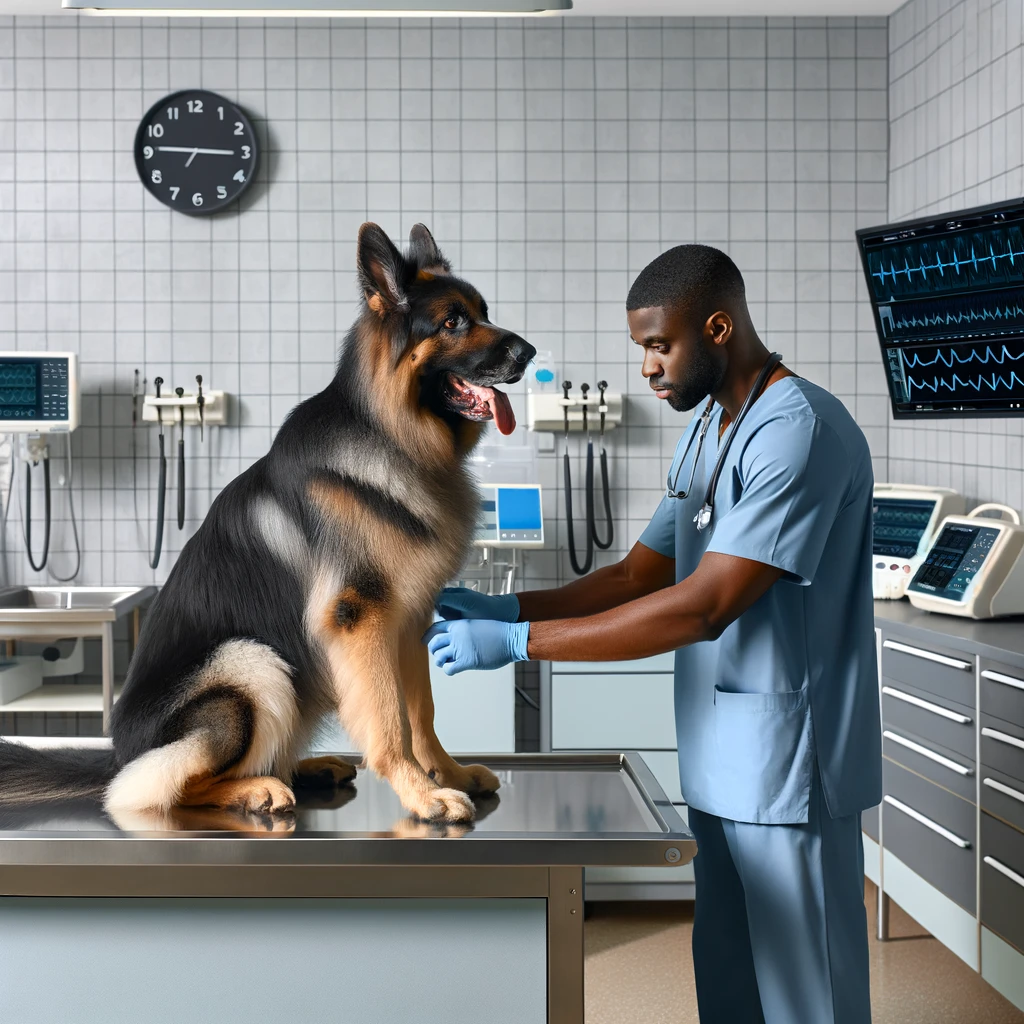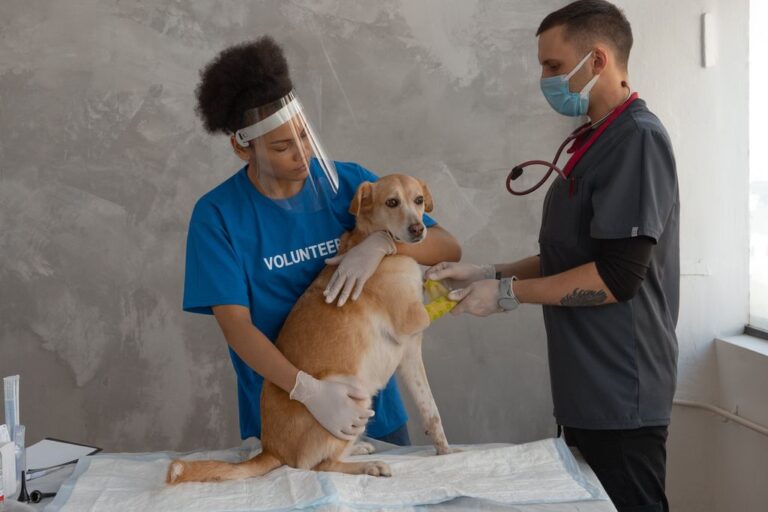The Importance of Regular Dog Check-ups: Costs, Prevention, and Peace of Mind
Introduction
Responsible dog ownership involves more than just providing food, water, shelter, and the occasional walk. An equally vital part of keeping our canine companions healthy and happy lies in scheduling regular veterinary check-ups to monitor their well-being, administer necessary care, and catch any potential health issues early.

However, many dog owners underestimate the importance of these routine vet visits due to the recurring costs or the misconception that their pet seems fine. Avoiding or delaying check-ups to save money can end up costing far more in the long run if a minor issue goes undiagnosed and develops into something more serious. Additionally, dogs are masters at hiding signs of illness, so apparent good health does not guarantee an underlying problem doesn’t exist.
This article will cover the essential role regular dog check-ups play in prevention, early disease detection, maintaining overall wellness, and ensuring quality of life. We’ll also dive into the typical pricing structure of these visits and how pet insurance can ease the financial burden when surprise bills pop up. Read on to learn why consistent veterinary care is about far more than just managing costs – it’s an investment in a healthier, happier pet and lasting relationship built on trust and care.
The Preventative Power of Check-Ups
Prevention has profound power when it comes to safeguarding a dog’s health. Routine wellness exams provide veterinarians the opportunity to establish baseline measurements for vital signs, weight, dental condition, blood values, and more. Tracking changes from visit to visit often reveals subtle trends that may indicate an underlying issue requiring further diagnosis or management. A thorough physical exam also detects obvious anomalies needing prompt attention before they worsen.
Vaccinations and diagnostic testing further strengthen the preventative purpose of check-ups. By vaccinating dogs against dangerous diseases, owners spare them from preventable suffering and potential death from virulent illnesses like rabies, parvovirus, distemper, and more. Heartworm tests determine if medication adjustments are necessary, while fecal exams look for intestinal parasites. Wellness panels screen bloodwork for indicators of organ dysfunction and other systemic issues manifesting internally before external symptoms appear.
Without this vigilant monitoring and proactive approach, seemingly small concerns can rapidly escalate into costly, challenging medical crises. Prevention provides the priceless safeguard of early intervention guiding diagnoses down more manageable paths.
The Power of Early Detection
“An ounce of prevention is worth a pound of cure” rings true when considering the benefits of early illness detection in dogs. As prey animals evolved to mask weaknesses, our canine companions frequently hide signs of sickness and injury to avoid appearing vulnerable. While this protective instinct secured survival in the wild, it works against domestic dogs needing medical care.

Subtle symptoms signaling disease processes often go unnoticed by owners accepting of gradual behavior shifts or intermittent lameness. Without regular oversight by skilled veterinary professionals attuned to small changes over time, underlying issues simmer under the radar. Gradually worsening over weeks or months, what starts as a relatively minor concern can progress to advanced disease requiring more invasive, expensive treatment with a guarded prognosis.
Annual or bi-annual wellness exams shine light on these sneaky health conditions through comprehensive history taking, diagnostic testing, and nose-to-tail physical assessment. By establishing patient baselines starting early in life, abnormalities raise red flags even when clinical signs seem insignificant to owners. Early discovery leads to earlier intervention, resulting in simpler solutions and vastly improved outlooks compared to late-stage disease detection.
The bottom line? Just because a dog acts normal at home does not guarantee all is well internally. Regular check-ups reveal what the naked eye cannot through science-based screening by experts who recognize what changing health trends may imply. Early detection saves pets from prolonged suffering and owners from the pains of end-stage diagnosis combined with guilt over what “should have” been addressed sooner. Prepare for the unexpected with prevention.
Comprehensive Care for Continued Wellness
Beyond disease detection and prevention, routine veterinary visits address all aspects of canine health for complete wellness care. Veterinarians ensure vaccinations stay current, providing immunity against contagious and often fatal illnesses like parvovirus and rabies. Checking blood, urine, and fecal samples offer insight into organ function and identify parasites wreaking havoc internally. Dental exams maintain oral health, catching painful decay and infection early to avoid systemic complications. Nutrition consultations fine-tune dietary needs from puppyhood through senior years. Behavior analysis spots trends interfering with quality of life so solutions can be implemented timely. Genetic testing informs breeding decisions, predicts future disease risks, and guides tailored wellness plans. From nose to tail, regular oversight tracks trends over time for shaping customized care catering to each patient’s evolving needs.
For senior dogs and those managing chronic conditions, consistent wellness checks prove particularly valuable. What may appear like “normal aging” can indicate conditions amenable to supportive therapies improving comfort and longevity. Arthritis, organ dysfunction, cancer, cognitive decline, incontinence and more all benefit from earlier detection and tailored management. Ongoing fine-tuning of supplements, medications, mobility aids, dietary adjustments and at-home care keeps aging dogs happier at home longer. Without regular guidance from veterinary partners intimately familiar with patients’ baseline statuses and changing needs over time, quality of life suffers for pets and people.
The investment of routine wellness exams pays continual dividends by optimizing health day-to-day and year after year. Consistent care leads the way to better care – catch issues big and small early so they don’t become giants later on down the road.
Common Costs and Insurance Breakdown
Now that we’ve covered the critical preventative, diagnostic, and wellness benefits routine veterinary check-ups provide dogs, let’s break down associated costs and insurance considerations.
Regular Annual or Bi-annual Check-up Fees
While visit costs range drastically based on location, clinic types, add-on diagnostics and services, most routine annual or bi-annual wellness exams including core basics like a physical exam, vaccines, heartworm test, and fecal exam run $100 to $300. Budget about $500 annually for two comprehensive wellness visits covering essentials.
| Service | Typical Cost Range |
|---|---|
| Physical Exam | $45 – $65 |
| Vaccines | $15 – $35 per vaccine |
| Heartworm Test | $40 – $60 |
| Fecal Test | $25 – $45 |
| X-Rays | $80 – $500+ |
| Ultrasound | $300 – $1,000 |
| Hospitalization (per day) | $500+ |
Includes bloodwork, urine test, blood pressure reading
Dental Cleaning & Exam: $200 – $800+
Includes anesthesia, scaling & polishing, extractions & medications as needed
This covers an otherwise healthy dog under senior age (over 7 years). For very young or senior pets, costs trend higher for age-specific diagnostics, vaccinations, and monitoring. Significant dental disease, medication refills for chronic conditions, and managing acute illnesses drive up visit fees further.
Additional Tests, Treatments & Hospitalization
If concerning symptoms or exam findings prompt further diagnostics like imaging, surgery, or hospitalization, costs quickly snowball into thousands.
X-Rays: $150 – $500+
Ultrasound:$300 – $1,000
Hospitalization: $500+ per day
Common Medications: $30 – $200/month
Surgeries
Spays & neuters– $200 – $500
Orthopedic surgeries – $1,500+
Emergency surgeries – $2,000+
Chronic Disease Management
This represents the greatest financial variable and burden, with costs ranging wildly based on condition severity, required medications, therapeutic diets, mobility aids, and care. Expect $100s to $1,000s+ annually for one diagnosed condition.
The Role of Pet Insurance
With routine visits running a few hundred dollars annually on average, but unexpected diagnostics, treatments or hospitalization increasing costs exponentially, pet insurance can offer financial sanity.
Policies differ based on companies, covered items, annual limits, deductibles, and reimbursement rates – but most pay out 70% to 90% of fees for emergencies and qualified expenses after reaching annual deductibles. Some impose restrictions for hereditary conditions while others decline pre-existing illness coverage when signs occurred before enrollment. Companies also limit advanced age enrollment. Shop carefully considering deductibles matching your budget should an emergency arise. Read restrictions carefully to determine what qualifying expenses policies cover should your dog face complicated health circumstances. This protects against financial euthanasia – needing to consider money over medicine during crisis scenarios.
Getting Claims Paid
Working with pet insurance companies when illness and emergencies strike involves the following general process:
1. Pay veterinary expenses in full upfront
2. Submit claim forms with required medical documentation
3. Provide additional paperwork if requested
4. Receive reimbursement checks covering policy percentages of covered costs
Reputable providers make online claims filing and status checks readily accessible with portals and apps. Never let financial fears prevent pursuing needed care – insurance can supply critical support so money matters take the back seat to medicine when it matters most.
The Priceless Investment
Managing routine and unexpected veterinary costs constitutes a chief concern among dog owners committed to providing the best care possible. However, considering consistent wellness checks as discretionary spending based solely on budget fails to capture the true value and necessity of these visits. Identifying brewing illness early on costs markedly less than waiting until acute crisis strikes with dimmer outlooks. Early detection provides more effective, affordable paths to diagnosis and treatment. Preserving wellness through prevention saves money and heartache over fighting preventable disease. And supporting dogs through chronic conditions relies on veterinary guidance to balance care with quality day-to-day life.
So while each wellness investment comes with a price tag – sometimes small, occasionally staggering – the ultimate return on investing in timely exams and tailored care cannot be calculated by cost alone. Regular veterinary check-ups give our dogs the promise of improved health, the gift of longer lives lived well, and the growing bond between pet and owner prioritizing preventative care. Our dogs rely on us to make this sound choice as their primary advocates. Skip sporadic crisis-only visits for consistent care with lifelong impact. Wellness offers the priceless investment of time together now and down the road – wouldn’t we all consider that money wisely spent?






